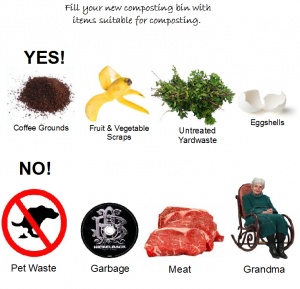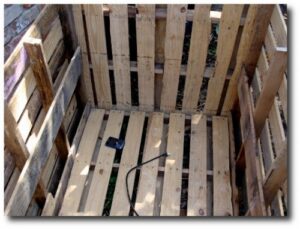You need fertilizer to help your plants and your flowers grow. However, most store-bought brands are loaded with harmful chemicals that will eventually find their way into the food you are growing. You can easily get the fertilizer you need to help your plants grow without the toxic side effects by making your own organic compost.
Making your own organic compost is not difficult. You can make it with things that are already in your house and your yard, and it is much better for your plants than any variety you could buy in the store. Here’s how you can make your own organic compost:
Buy or Build a Compost Bin
First, you need a place to create your compost. You can buy bins from the hardware store, or you can build one yourself from some scrap lumber. Your bin needs to have solid sides (no chicken wire or pallets) and a cover. While you can just throw your compost materials into an open heap and eventually get compost, the process will take much longer and will be vulnerable to pests if you don’t choose an enclosed bin.
The bottom of your bin should be completely open and resting directly on soil. You need to place your bin in a sunny location that is not in the path of runoff.
Add Your Materials
Compost requires two things: “Green” materials and “brown” materials. Green materials are rich in nitrogen, and brown materials are rich in carbon, both of which are necessary to create compost. Examples of green materials include:
Grass clippings
Weeds
Kitchen scraps, including fruit and vegetable waste
Tea bags and coffee grounds
Examples of brown materials include:
Dead leaves
Straw
Dead flowers and plants from your garden
Newspaper
Cardboard
Sawdust and wood shavings
It is best not to compost meat scraps or pet waste. You may add some worms to your mix to speed up the composting process, but it is not necessary.
 Tend Your Compost
Tend Your Compost
You need not do anything to your compost pile in order for it to become the rich, black, nurturing substance that you need to help your plants grow beautifully. However, to keep your pile composting in a timely fashion, you can help it along by turning the mix with a pitchfork or shovel and watering it about once a week. This will help keep the materials mixed and crate the right balance to encourage the composting process. At the end of a few weeks or months, you should be able to scoop some rich compost from the bottom of the pile.
Composting is not only better for your garden, it’s better for the environment. You can put the scraps and waste from your kitchen and your home to good use instead of sending them to the landfill. In the process, you create delicious, home-grown food that is organic and loaded with nutrients.
Do you compost? Tell us what you put into your compost and what methods you use in the comments!
About the Author:
Bridget Sandorford is a freelance food and culinary writer, where recently she’s been researching colleges with culinary arts majors. In her spare time, she enjoys biking, painting and working on her first cookbook.

Pallets are a great option for composting because they are free- Check out Whitneys Blog for pictures of this compost station.


